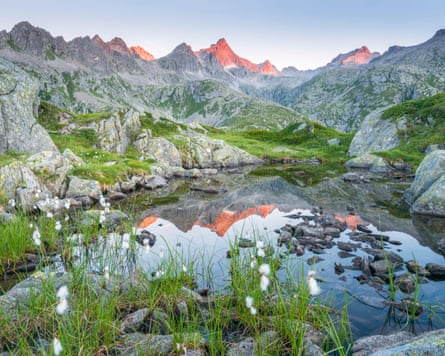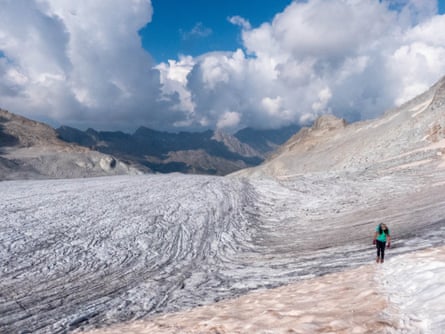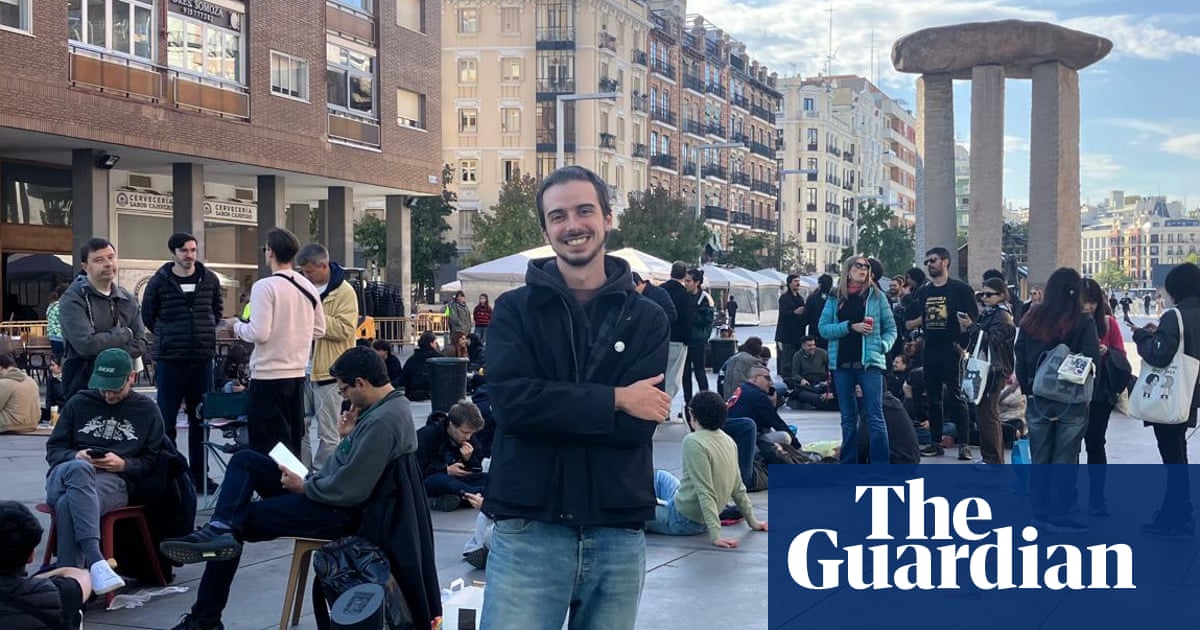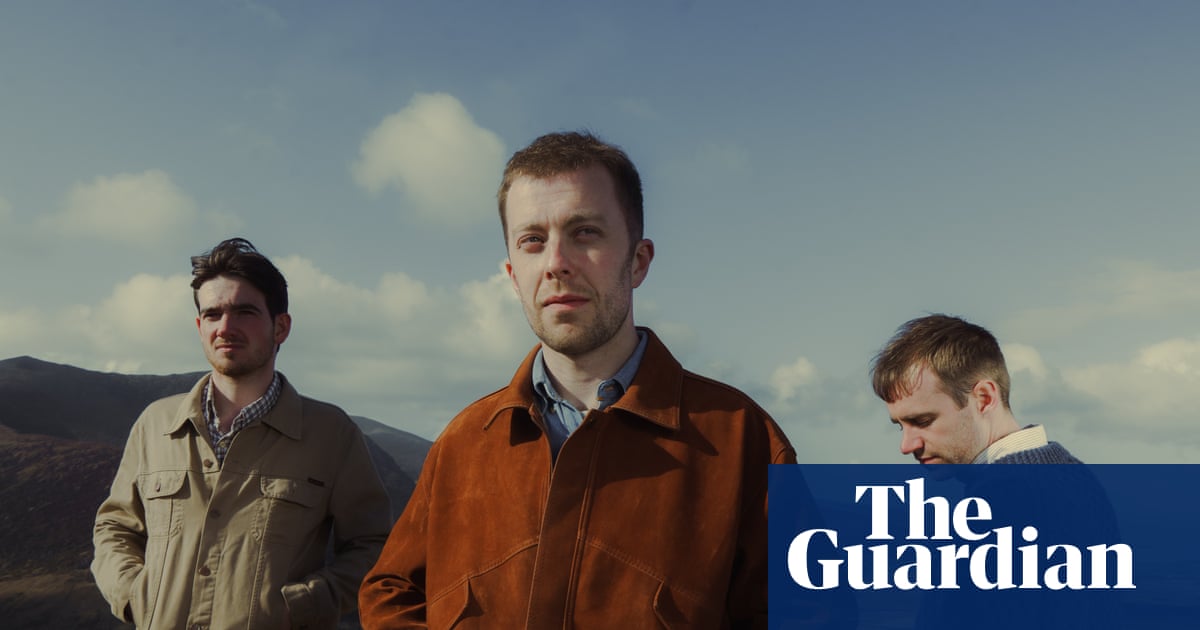Thick white cloud hangs outside the windows of Rifugio Segantini, a mountain hut 2,373 metres up in the Italian Alps. But it is shifting, revealing glimpses of the majestic Brenta Dolomites before us: a patch of snow here, a craggy peak there. The view is tantalising, and a couple of times I have run outside in a kind of peekaboo farce to see the full display, only for it to pass behind clouds again.
The refuge – cosy, wooden-clad and packed with hikers – is named after the Italian landscape painter Giovanni Segantini, who was inspired by these mountains. His portrait hangs on the walls and his name is embroidered on the lace curtains. A simple stone building with blue and white shutters in Val d’Amola, the refuge is dwarfed by its rugged surrounds, with Trentino’s highest peak, the snow-capped 3,556-metre Presanella, as a backdrop. The entries in the guestbook are entirely by locals.
For most British hikers, the eastern parts of the Dolomites, like the Tre Cime di Lavaredo and Lago di Braies, towards Cortina, are better known. Few come to Trentino, and fewer still come to this part of the Adamello Brenta nature park. This, I am told, is the wild part of these mountains: less explored, with fewer tourists, and rousing “bigger emotion”, according to my mountain guide Nicola Binelli. (He climbed Presanella for the first time when he was six.)
I’m here to sample the new Via delle Valli (the Trail of the Valleys), a network of 50 hiking routes covering 50 of Trentino’s mountain valleys, which launches this month. It runs from ski capital Madonna di Campiglio down to Lake Idro, taking in both the Brenta Dolomites and the Adamello glacier, Italy’s largest. Some are gentle family-friendly strolls; others are remote challenging climbs for which a mountain guide is recommended. Trails can be walked in a day, or strung together in a multi-day trek, making use of the area’s mountain huts (open from June to September) and bivouac shelters. But exploring the whole route is a long-term project, intended to be walked over weeks, months or even years.

These trails existed before, but they have been unified under the Via delle Valli. Their signage is being updated, maps and GPX files have been made available online, and a “Valley Passport” has been introduced, which hikers can stamp at each valley as an encouragement to return. Each valley has a local ambassador, intended to pass their love and knowledge of the area on to others.
The initiative, which has been three years in the making, is the brainchild of local tourist board manager Loredana Bonazza, who was inspired by Spain’s famous Camino de Santiago. The idea, she explains, is to tempt mountain-lovers away from the area’s hotspots, like Madonna di Campiglio and Val Genova, and towards adventures on lesser-charted trails. “Every valley is different,” she says. “We forget everything [in the mountains]: our stress, our jobs, our family problems. You really feel connected with the mountain. The result is: per scoprire; per scoprirsi. To discover; to discover yourself.”
My focus is on two contrasting valleys – the rocky, rough Val D’Amola and neighbouring verdant Val Nambrone, where we begin by exploring one of its jewels: the breathtaking (literally) Lago Vedretta, at 2,600 metres. We climb from another hut, Rifugio Cornisello (newly renovated and all timber and glass), through green alpine pastures, up over a rocky lip, where the lake appears in all its glory. The landscape remains frozen, even in late June, with sheets of ice thawing into pale blue water. You’d be forgiven for thinking it was Patagonia, rather than Italy.
There are around 100 bears in Trentino, as well as wolves, foxes, chamois, falcons and eagles. But on the way back to the refuge, where we are spending the night, we take a detour up above the turquoise Lago di Cornisello Superiore to spot fluffier mountain residents: marmots.
There are plenty of them up here, promises Debora Rambaldini, ambassador for Val Nambrone and the first woman in the area to become a forest guard. We follow her up a lush green spur dotted with wildflowers, and stand in silence, listening to the sounds of rushing water. Rambaldini puts a finger to her lips. There, a flush of reddish fur, a marmot darting between rocks, bushy tailed. And better still, another sunbathing on a rock below, eyeing us with suspicion.

The following day, we head to Val D’Amola. The route takes us around the inky Lago Nero and up over the Bocchetta de l’Om pass, backpacks fully loaded. Val D’Amola is only a few kilometres away, but it is a different world. It is more peat and bog, more Lord of the Rings. The water – grey here, not blue – thunders rather than babbles. But after lunch it’s our ascent up to Quattro Cantoni, a steep ledge and the gateway to the next valley, that reveals more of these mountains’ wild side. The cloud hangs low and thick, and apparently a storm is coming – soon. The sky rumbles above. Scrambling over rocks, tiptoeing on ledges and gingerly crossing patches of snow, the route is humbling: a reminder to improve my mountaineering skills. But safely back at Segantini, I feel elated. And the storm never comes.
At Segantini, just as we sit down for our hearty mountain dinner of polenta, the clouds finally part. Seen from Cornisello, these jagged, teeth-like Dolomites appeared pastel pink in the sunset; now, they are slate-grey, foreboding, capped with snow. They fill the whole horizon. As the sky darkens, we can see the twinkling lights of another hut, the vast Tuckett which sleeps 120 people, slowly appear on their black flanks.
I head to bed happy, and feel my heart racing with the altitude. It’s a small, six-bed dorm room, with a window that looks back towards the way we came. Occasionally, distant flashes of lightning illuminate the room, disrupting the dark and quiet. Sleeping – and waking – above 2,000 metres, though, is special. Ordinary life, below the clouds, feels a long way down. Time slows, you can only focus on the present, the company, the view. Afterwards, a little part of me will stay up here at Segantini, waiting to come back and explore more of these wild mountains and the secrets of the Via delle Valli.
The trip was provided by Trentino Marketing and the local tourist board. Dorm rooms at at Rifugio Cornisello €65 B&B or €90-€100 half-board, and €85 half-board at Rifugio Segantini. For more information about the Via delle Valli, visit campigliodolomiti.it

 3 months ago
92
3 months ago
92

















































